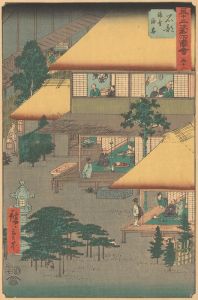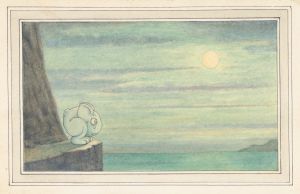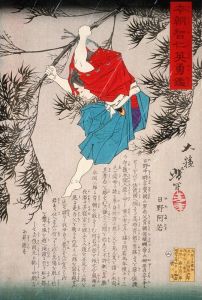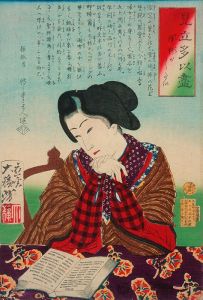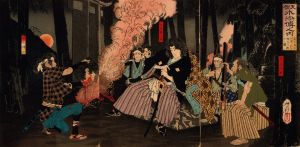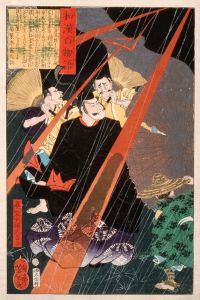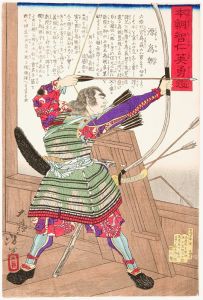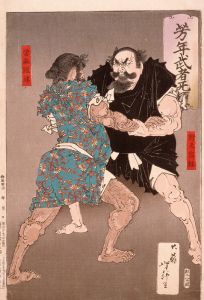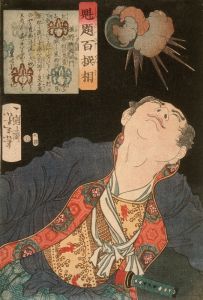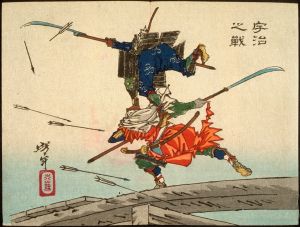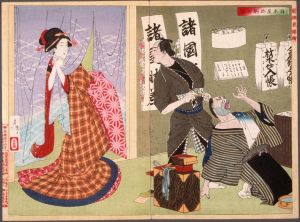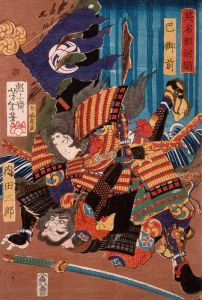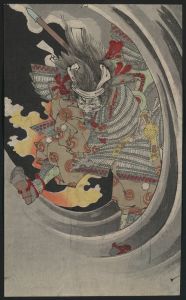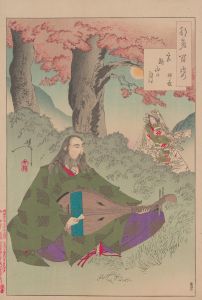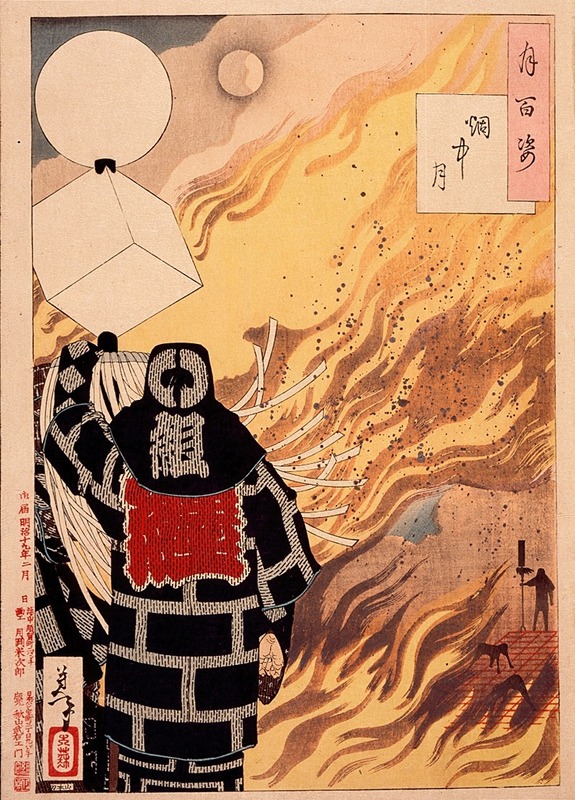
One Hundred Aspects of the Moon
A hand-painted replica of Tsukioka Yoshitoshi’s masterpiece One Hundred Aspects of the Moon, meticulously crafted by professional artists to capture the true essence of the original. Each piece is created with museum-quality canvas and rare mineral pigments, carefully painted by experienced artists with delicate brushstrokes and rich, layered colors to perfectly recreate the texture of the original artwork. Unlike machine-printed reproductions, this hand-painted version brings the painting to life, infused with the artist’s emotions and skill in every stroke. Whether for personal collection or home decoration, it instantly elevates the artistic atmosphere of any space.
"One Hundred Aspects of the Moon" is a celebrated series of woodblock prints by the renowned Japanese artist Tsukioka Yoshitoshi, created between 1885 and 1892. This series is one of Yoshitoshi's most famous works and is considered a masterpiece of ukiyo-e, a genre of Japanese art that flourished from the 17th through the 19th centuries. Ukiyo-e, which translates to "pictures of the floating world," often depicted scenes from history, folklore, kabuki theater, and the natural world.
Yoshitoshi was born in 1839 and became one of the last great masters of the ukiyo-e tradition. His career spanned a period of significant cultural and political change in Japan, as the country transitioned from the Edo period to the Meiji era. This transition brought about rapid modernization and Western influence, which also affected the arts. Despite these changes, Yoshitoshi remained dedicated to traditional Japanese themes and techniques, while also incorporating new ideas and styles.
The "One Hundred Aspects of the Moon" series consists of 100 individual prints, each depicting a different scene inspired by Japanese and Chinese history, literature, folklore, or mythology, with the moon as a central motif. The moon serves as a unifying element across the series, symbolizing various themes such as beauty, mystery, and the passage of time. Each print is accompanied by a title and often a short poem or text that provides context or enhances the narrative depicted in the artwork.
Yoshitoshi's work in this series is notable for its dynamic composition, intricate detail, and expressive use of color. He employed a variety of techniques to achieve depth and texture, such as the use of gradation and the careful application of pigments. The prints often feature dramatic contrasts between light and shadow, enhancing the emotional impact of the scenes.
The subjects of the prints are diverse, ranging from famous historical figures and legendary heroes to scenes of everyday life and supernatural occurrences. Some prints depict well-known stories from classical literature, such as "The Tale of Genji" or "The Tale of the Heike," while others draw on folklore and mythological tales. Through these depictions, Yoshitoshi not only showcased his artistic skill but also conveyed a deep appreciation for Japan's cultural heritage.
"One Hundred Aspects of the Moon" was produced during a time when the popularity of ukiyo-e was waning due to the advent of photography and other modern printing techniques. Despite this, the series was well-received and helped to cement Yoshitoshi's reputation as a master artist. Today, the series is highly regarded by art historians and collectors, and individual prints are held in the collections of major museums around the world.
Yoshitoshi's legacy extends beyond his technical prowess; he is often credited with revitalizing the ukiyo-e tradition and bridging the gap between traditional and modern Japanese art. His work continues to be celebrated for its innovation, emotional depth, and enduring beauty.





